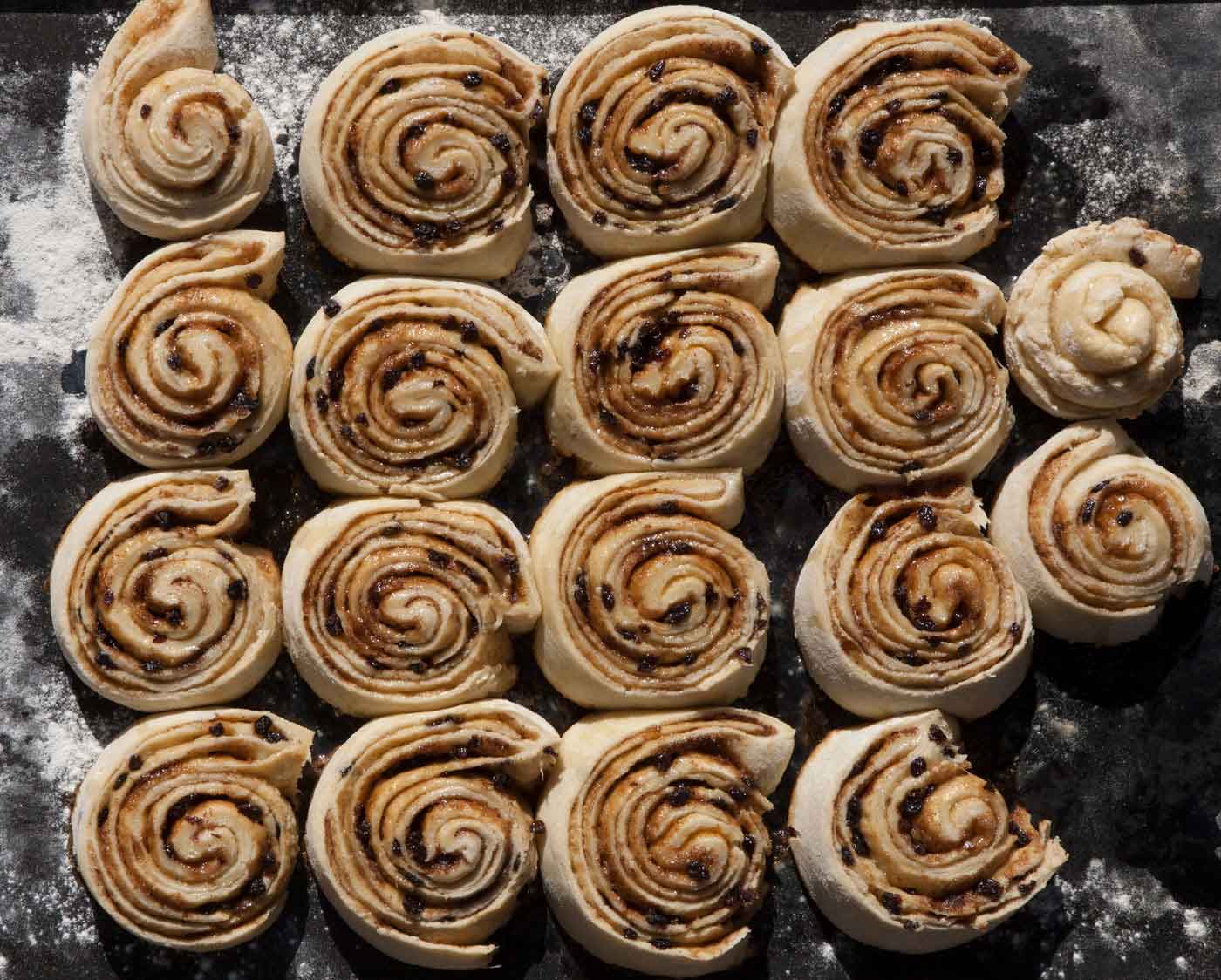Watch our historic foodways staff cook this recipe, then try it at home
These are certainly the forerunner of modern sweet rolls. Enjoyed by royalty and commoner alike, they were evidently concocted at a bakery known as the Chelsea Bun House, which was built on Pimlico Road in the Chelsea section of London.
Watch the video below to learn how we make this recipe in our kitchens based on the 18th-century description below, then use our 21st-century translation to try the recipe at home!
18th Century
“We’ve not found a specific 18th century cookbook with the Chelsea Bun recipe in it. The research, however, gives accounts of them over time from a number of individuals with the ingredients and descriptions always being the same. So here is our recipe for creating these wonderful buns. They take a little time to make, but we’re sure you’ll agree they are scrumptious.”
21st Century
Ingredients
The Dough
- 6 c. flour (unbleached all purpose)
- 3 eggs
- ½ c. butter, one stick (room temperature)
- 1 ¼ c. milk
- 2 packages of dry yeast
- 1 Tbsp. salt
- 1 Tbsp. sugar
The Filling
- 4 oz. currants (fresh or dried currants that have been plumped in warm water and drained)
- 4 oz. brown sugar mixed with 1 ½ oz. white sugar
- 4 oz. softened butter
- 2 Tsp. ground cinnamon (optional)
- grated peel of 1 lemon (optional)
The Glaze
- 1 c. Sugar
- ½ c. Milk
Instructions
- Put your flour in a large mixing bowl. Work the butter into the flour thoroughly with your hands so that it is absorbed by the flour. In a separate bowl whip your eggs thoroughly.
- To the eggs add the sugar, salt, milk (warm, not hot) and the dry yeast. Blend all of these ingredients well.
- Pour egg mixture into the flour/butter and mix with a wooden spoon until it comes together. Knead it with your hands until it becomes similar to bread dough. If it is a little soft, add a little flour to stiffen it some and to keep it from sticking to the bowl.
- Cover with a warm damp cloth and set it aside in a warm place to let it proof (rise) about an hour. In the meantime have your currants, butter and sugar put into small bowls to have ready for the filling of the dough.
- After the dough has risen you are ready to roll out the dough and put in the filling. Start by flouring your work surface so the dough doesn’t stick to it.
- Gently punch the dough down to let out the air and work it into a ball. Roll it out into a rectangle approximately 18″ to 20″ inches by 12″ to 14″ inches and around a ½ inch thick. Lightly score the dough vertically to create three equal sections.
- With a table knife, spread half of your softened butter on the left two sections leaving the right section uncovered. Evenly sprinkle half of the sugar over the butter and then half of the currants evenly over that. Add half of the cinnamon, if you choose to use it, over that.
- Gently lift the right third of the dough and fold it over the center third and gently press it down. Now take those two and gently fold it over onto the left third and press down gently. You now have a rectangle one third the size you started with but three times as thick.
- Lightly flour your work surface again and center your dough so that it looks like a rectangle again. Roll the dough out as you did before until it is as large as the rectangle size we started with. Now repeat the filling steps, but this time, spread the butter/sugar/currants/cinnamon and lemon peel (if you choose) over the whole surface. Once you’ve done that, start at the edge of the dough closest to you and proceed to roll the dough up into a pinwheel log, sealing the last half inch or so with a little water. The log should be around two inches in diameter.
- Now take a medium sharp knife and proceed to cut the buns from one end of the “log” to the other at about an inch and a quarter to an inch and a half for each one. Lay them flat side down on a baking sheet no farther than an inch apart. As they rise in a warm place for about a half hour to forty-five minutes they should touch each other.
- Bake them at about 375° for about 25 minutes or so (depending on the thickness of the buns). Do not bake them too long, they are to be soft not firm and should be rather square in shape. They shouldn’t be dark brown but rather light in color.
- For the glaze, add the milk to the sugar and gently heat it, stirring until you blend the two together. Lightly spoon the glaze over each bun. This glaze is not to be like an icing but rather a thin glaze to enhance to bun’s flavor. Cool and enjoy.
